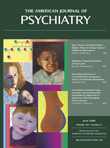Parietal Attentional System Aberrations During Target Detection in Adolescents With Attention Deficit Hyperactivity Disorder: Event-Related fMRI Evidence
Abstract
Objective: Directed attention, the ability to allocate and direct attention toward a salient stimulus, is impaired in attention deficit hyperactivity disorder (ADHD). This construct is often assessed with target detection or oddball tasks, and individuals with ADHD perform poorly on such tasks. However, to date, the specific brain structures or neural mechanisms underlying target detection dysfunction in individuals with ADHD have not been identified. The authors’ goal was to investigate neural correlates of target detection dysfunction in ADHD using event-related fMRI. Method: Behavioral and brain activation data were collected while subjects performed a visual oddball task. Participants included 14 right-handed male adolescents with ADHD (combined type) and 12 typically developing age- and handedness-matched male comparison subjects. Results: Individuals with ADHD made significantly more errors of commission than comparison subjects. Further, relative to comparison subjects, individuals with ADHD showed significantly less activation in the bilateral parietal lobes (including the superior parietal gyrus and supramarginal and angular gyri of the inferior parietal lobe), right precuneus, and thalamus. Conclusions: Adolescents with ADHD demonstrated significant impairments in their ability to direct and allocate attentional resources. These difficulties were associated with significant aberrations in the parietal attentional system, which is known to play a significant role in attention shifting and detecting specific or salient targets. Thus, dysfunction in the parietal attentional system may play a significant role in the behavioral phenotype of ADHD.



